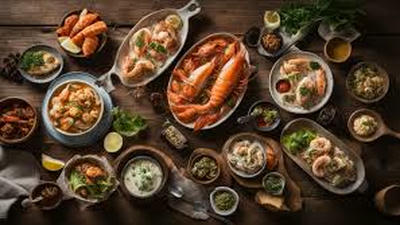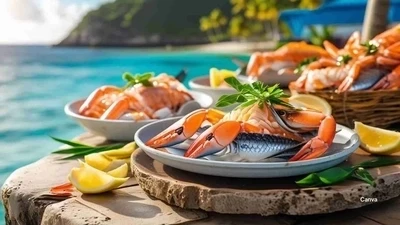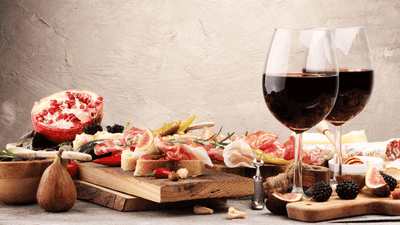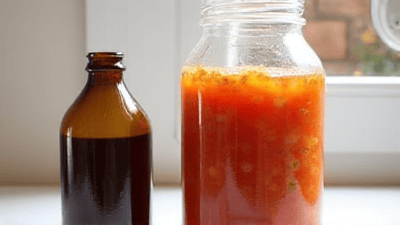
As global awareness around the importance of sustainability grows, the seafood industry faces increasing scrutiny regarding its impact on ocean ecosystems. Unsustainable fishing practices and overfishing have led to declines in fish populations, affecting marine biodiversity and the livelihoods of communities reliant on fishing. However, there is a light at the end of the tunnel. By choosing sustainable seafood options, consumers can enjoy delicious meals while supporting ocean health.
Understanding Sustainable Seafood
Before diving into recipes, it is essential to understand what sustainable seafood means. Sustainable seafood refers to fish and seafood harvested in ways that maintain healthy populations and ecosystems. The overarching goal is to ensure that the fishing practices used do not compromise the ability of the ocean to regenerate and support life.
Key Principles of Sustainable Seafood
-
Healthy Fish Populations: Sustainable seafood comes from fish populations that are not overfished and are caught at levels that allow their populations to remain stable or grow.
-
Low Environmental Impact: Sustainable fishing practices minimize damage to marine habitats and preserve the ecosystem. This includes avoiding bycatch, which is the capture of unintended species.
-
Strong Fisheries Management: Sustainable seafood is sourced from fisheries that are well-managed and adhere to regulations aimed at protecting marine resources.
-
Social Responsibility: Sustainable seafood also considers the rights and livelihoods of fishing communities, ensuring fair treatment and benefits for those who work in the industry.
Identifying Sustainable Seafood
When shopping for seafood, look for labels and certifications that indicate sustainability. Some well-known certifications include:
- Marine Stewardship Council (MSC)
- Aquaculture Stewardship Council (ASC)
- Seafood Watch recommendations
By choosing seafood with these certifications, you can feel confident that you are supporting environmentally responsible practices.
Benefits of Choosing Sustainable Seafood
-
Preserves Ocean Ecosystems: Sustainable fishing practices help maintain healthy fish populations and protect marine habitats, contributing to the overall health of the ocean.
-
Supports Local Economies: By selecting sustainable seafood, you support local fishing communities and sustainable fisheries, which helps bolster local economies.
-
Health Benefits: Seafood is an excellent source of lean protein, omega-3 fatty acids, vitamins, and minerals. Sustainable choices ensure that you enjoy seafood that is healthy for both you and the planet.
-
Encourages Responsible Practices: When consumers demand sustainable seafood, it incentivizes the industry to adopt responsible fishing practices, leading to broader improvements in the sector.
Ocean-Friendly Recipes for 2025
Now that you understand the importance of sustainable seafood, let’s explore a variety of delicious recipes that feature ocean-friendly ingredients. These recipes are not only tasty but also celebrate the flavors of the sea while promoting sustainability.
1. Grilled Mahi-Mahi Tacos with Mango Salsa
Ingredients:
- 1 pound mahi-mahi fillets (sustainably sourced)
- 1 tablespoon olive oil
- Juice of 1 lime
- 1 teaspoon cumin
- Salt and pepper to taste
- 8 small corn tortillas
For the mango salsa:
- 1 ripe mango, diced
- 1/4 red onion, finely chopped
- 1 jalapeño, seeded and minced
- Juice of 1 lime
- 1/4 cup fresh cilantro, chopped
- Salt to taste
Instructions:
- In a bowl, combine olive oil, lime juice, cumin, salt, and pepper. Add mahi-mahi fillets and marinate for 15-20 minutes.
- Preheat the grill to medium-high heat. Grill the fish for about 4-5 minutes per side until cooked through and flaky.
- While the fish is grilling, prepare the mango salsa by mixing together mango, red onion, jalapeño, lime juice, cilantro, and salt in a bowl.
- Warm the corn tortillas on the grill for about 30 seconds per side.
- Assemble the tacos by placing grilled mahi-mahi on tortillas, topped with mango salsa.
2. Lemon Garlic Butter Shrimp with Zucchini Noodles
Ingredients:
- 1 pound shrimp, peeled and deveined (sustainably sourced)
- 3 medium zucchinis, spiralized into noodles
- 4 tablespoons unsalted butter
- 4 cloves garlic, minced
- Juice and zest of 1 lemon
- 1/4 teaspoon red pepper flakes
- Salt and pepper to taste
- Fresh parsley, chopped, for garnish
Instructions:
- In a large skillet, melt butter over medium heat. Add minced garlic and red pepper flakes, cooking until fragrant.
- Add shrimp to the pan and season with salt and pepper. Cook until shrimp turn pink and opaque, about 3-4 minutes.
- Stir in lemon juice and zest, cooking for another minute.
- Add spiralized zucchini noodles to the skillet and toss to combine. Cook for an additional 2-3 minutes until the noodles are tender.
- Garnish with fresh parsley and serve immediately.
3. Baked Salmon with Quinoa and Asparagus
Ingredients:
- 2 salmon fillets (sustainably sourced)
- 1 cup quinoa, rinsed
- 2 cups vegetable broth or water
- 1 bunch asparagus, trimmed
- 2 tablespoons olive oil
- 1 lemon, sliced
- Salt and pepper to taste
Instructions:
- Preheat the oven to 400 degrees Fahrenheit (200 degrees Celsius).
- In a pot, combine quinoa and vegetable broth or water. Bring to a boil, then reduce heat to low and cover, cooking for about 15 minutes or until quinoa is fluffy.
- On a baking sheet, arrange asparagus and salmon fillets. Drizzle with olive oil, and season with salt and pepper. Place lemon slices on top of the salmon.
- Bake for 15-20 minutes until the salmon is cooked through and flakes easily with a fork and asparagus is tender.
- Serve the salmon and asparagus over a bed of quinoa.
4. Fish Chowder with Corn and Potatoes
Ingredients:
- 1 pound sustainable white fish (such as cod or haddock), cut into chunks
- 4 cups fish or vegetable broth
- 2 cups diced potatoes
- 1 cup corn (fresh or frozen)
- 1 onion, chopped
- 2 cloves garlic, minced
- 1 cup heavy cream
- Salt and pepper to taste
- Fresh thyme, for garnish
Instructions:
- In a large pot, sauté onions and garlic until translucent.
- Add diced potatoes and broth, bringing the mixture to a boil. Reduce heat and simmer until potatoes are tender.
- Stir in corn and fish chunks, cooking until the fish is opaque, about 5 minutes.
- Add heavy cream, and season with salt and pepper. Heat through.
- Garnish with fresh thyme before serving.
5. Spicy Tuna Poke Bowls
Ingredients:
- 1 pound sushi-grade tuna, diced (sustainably sourced)
- 2 cups cooked sushi rice
- 1 avocado, sliced
- 1 cucumber, thinly sliced
- 1/4 cup soy sauce or tamari
- 1 tablespoon sesame oil
- 1 teaspoon sriracha (adjust to taste)
- 1 teaspoon sesame seeds
- Green onions, chopped, for garnish
Instructions:
- In a bowl, combine diced tuna with soy sauce, sesame oil, and sriracha. Let marinate for about 10 minutes.
- To assemble the poke bowls, start with a base of sushi rice.
- Top with marinated tuna, sliced avocado, and cucumber.
- Sprinkle with sesame seeds and green onions before serving.

6. Seafood Paella
Ingredients:
- 1 cup Arborio rice
- 2 cups seafood or vegetable broth
- 1/2 pound sustainable shrimp, peeled and deveined
- 1/2 pound mussels, cleaned
- 1/2 pound sustainable fish (like cod), cut into chunks
- 1 red bell pepper, diced
- 1 onion, chopped
- 2 garlic cloves, minced
- 1 teaspoon smoked paprika
- 1/2 teaspoon saffron threads (optional)
- Olive oil, for cooking
- Fresh parsley, for garnish
Instructions:
- In a large pan, heat olive oil over medium heat. Sauté onion, bell pepper, and garlic until softened.
- Add Arborio rice and smoked paprika, stirring for a minute to toast the rice.
- Pour in broth and saffron, bringing to a boil. Reduce heat and let simmer for about 15 minutes, without stirring.
- Nestle shrimp, mussels, and fish into the rice. Cover and cook for an additional 10 minutes until seafood is cooked through and mussels have opened.
- Garnish with fresh parsley before serving.
7. Grilled Octopus with Lemon and Herbs
Ingredients:
- 1 pound octopus, cleaned
- 3-4 cloves garlic, minced
- 1/4 cup olive oil
- Juice of 2 lemons
- Fresh herbs (parsley, oregano, or thyme), chopped
- Salt and pepper to taste
Instructions:
- Prepare the octopus by boiling it in salted water for about 45 minutes or until tender. Drain and allow to cool slightly.
- Cut the tentacles into pieces and marinate with garlic, olive oil, lemon juice, herbs, salt, and pepper for at least an hour.
- Preheat the grill to medium-high heat. Grill the octopus pieces for about 3-4 minutes on each side until charred.
- Serve warm with additional lemon wedges.
8. Coconut Curry Mussels
Ingredients:
- 2 pounds mussels, cleaned
- 1 can coconut milk
- 2 tablespoons red curry paste
- 1 tablespoon fish sauce
- 2 cloves garlic, minced
- 1 inch ginger, grated
- Fresh lime juice
- Fresh cilantro, for garnish
Instructions:
- In a large pot, heat a little olive oil over medium heat. Add garlic and ginger, cooking until fragrant.
- Stir in red curry paste, cooking for another minute.
- Pour in coconut milk and fish sauce, bringing the mixture to a simmer.
- Add mussels and cover the pot. Cook for about 5-7 minutes until mussels open.
- Stir in lime juice and garnish with fresh cilantro before serving.
9. Baked Cod with Tomato Basil Sauce
Ingredients:
- 2 cod fillets (sustainably sourced)
- 1 can diced tomatoes
- 1/2 onion, chopped
- 2 cloves garlic, minced
- 1/4 cup fresh basil, chopped
- Olive oil
- Salt and pepper to taste
Instructions:
- Preheat your oven to 375 degrees Fahrenheit (190 degrees Celsius).
- In a skillet, sauté onion and garlic in olive oil until tender. Add canned tomatoes and basil, simmering for about 5 minutes.
- Season cod fillets and place them in a baking dish. Pour the tomato sauce over the fish.
- Bake for 20-25 minutes until the fish is cooked through and flakes easily.
10. Shrimp and Vegetable Stir-Fry
Ingredients:
- 1 pound shrimp, peeled and deveined (sustainably sourced)
- 2 cups mixed vegetables (bell peppers, broccoli, snow peas)
- 4 tablespoons soy sauce or tamari
- 2 tablespoons sesame oil
- 2 cloves garlic, minced
- Cooked brown rice or quinoa
Instructions:
- In a large skillet or wok, heat sesame oil over medium-high heat. Add garlic and mixed vegetables, stir-frying for a few minutes until tender but still crisp.
- Add shrimp to the skillet and pour soy sauce over everything. Stir-fry until shrimp turns pink and is cooked through, about 4-5 minutes.
- Serve over cooked brown rice or quinoa.
Conclusion
Choosing sustainable seafood is an essential step toward preserving the health of our oceans and enjoying delicious meals. By embracing sustainable practices, we can protect marine ecosystems while enjoying the diverse flavors that seafood has to offer.
These ocean-friendly recipes not only taste incredible but also reflect a commitment to sustainability, allowing you to indulge without compromising the future of our oceans. As we move toward 2025, let us continue to evolve our seafood choices, making a positive impact on the planet one meal at a time.



